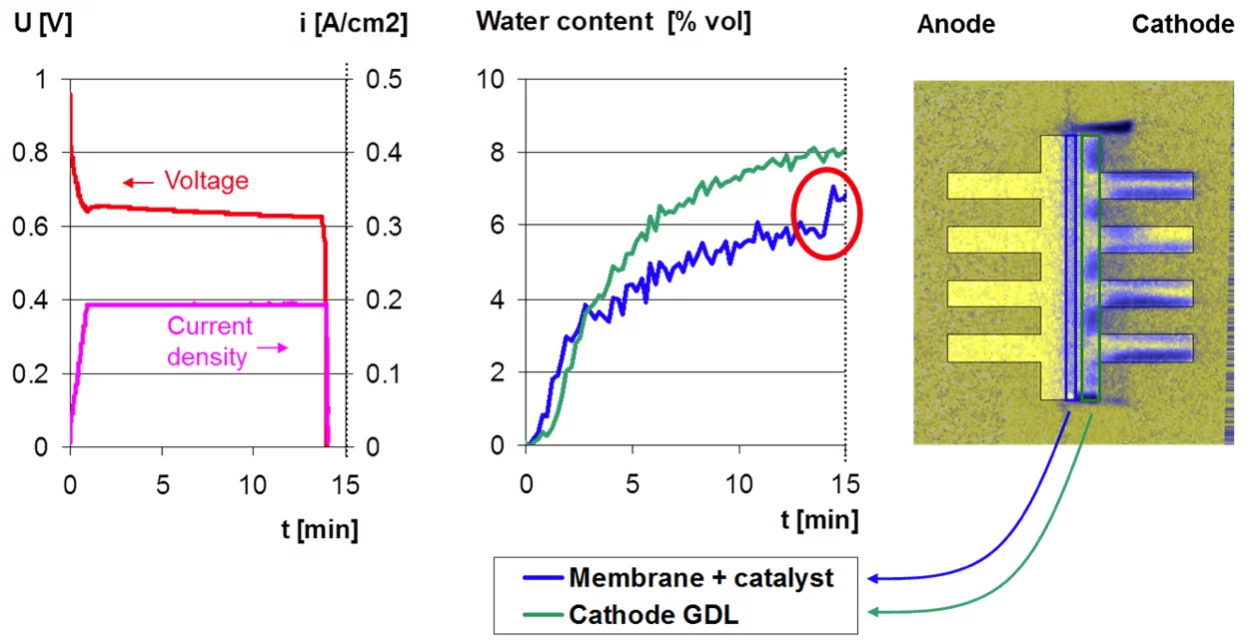Introduction
In conventional through plane imaging the neutron beam is perpendicular to the membrane. To image the distribution between the different cell layers, high resolution in plane imaging can be used, where the neutron beam is parallel to the membrane. Due to the low thickness of the fuel cell layers (e.g. 200 µm for a GDL), high resolution is required. To optimize the trade-off between spatial and temporal resolution, we developed a set of anisotropic resolution enhancement methods [1, 2] as the high spatial resolution is only required in one direction, namely across the membrane. This allows obtaining a sufficient resolution to resolve the different layers while keeping reasonable exposure times.
- Effective spatial resolution of 20 µm for small scale and middle size cells up to 120 mm length (suitable to resolve profiles of water distribution across the GDLs)
- Effective spatial resolution of 50 µm for long cells up to 300 mm length (suitable to separately resolve the water content of the GDLs in the anodeand the cathode )
- Typical exposure times: 5 – 20 seconds
- The active area size in the direction of the beam is limited to ~20 mm
- Possibility to measure several small scale fuel cells simultaneously with our multi-cell setup
Interested in high resolution neutron imaging of electrochemical systems ? Contact us.
Contact
Dr. Pierre Boillat
Electrochemistry Laboratory (LEC) and
Neutron Imaging and Activation Group (NIAG)
5232 Villigen PSI
Switzerland
Telephone: +41 56 310 2743
Fax +41 56 310 4415
Email: pierre.boillat@psi.ch

